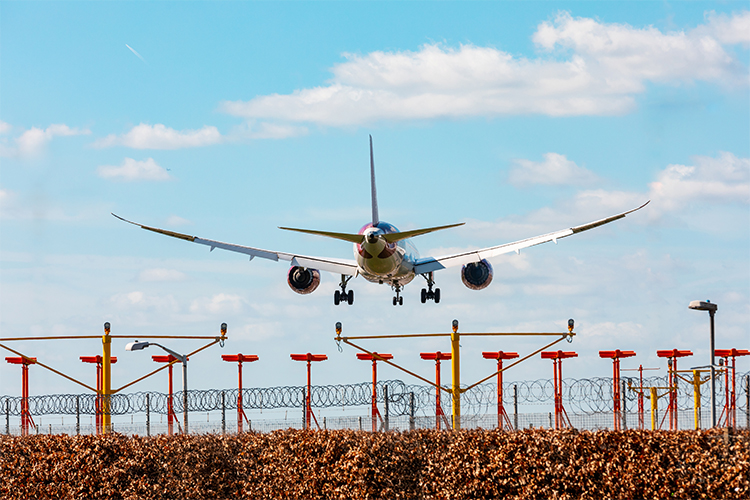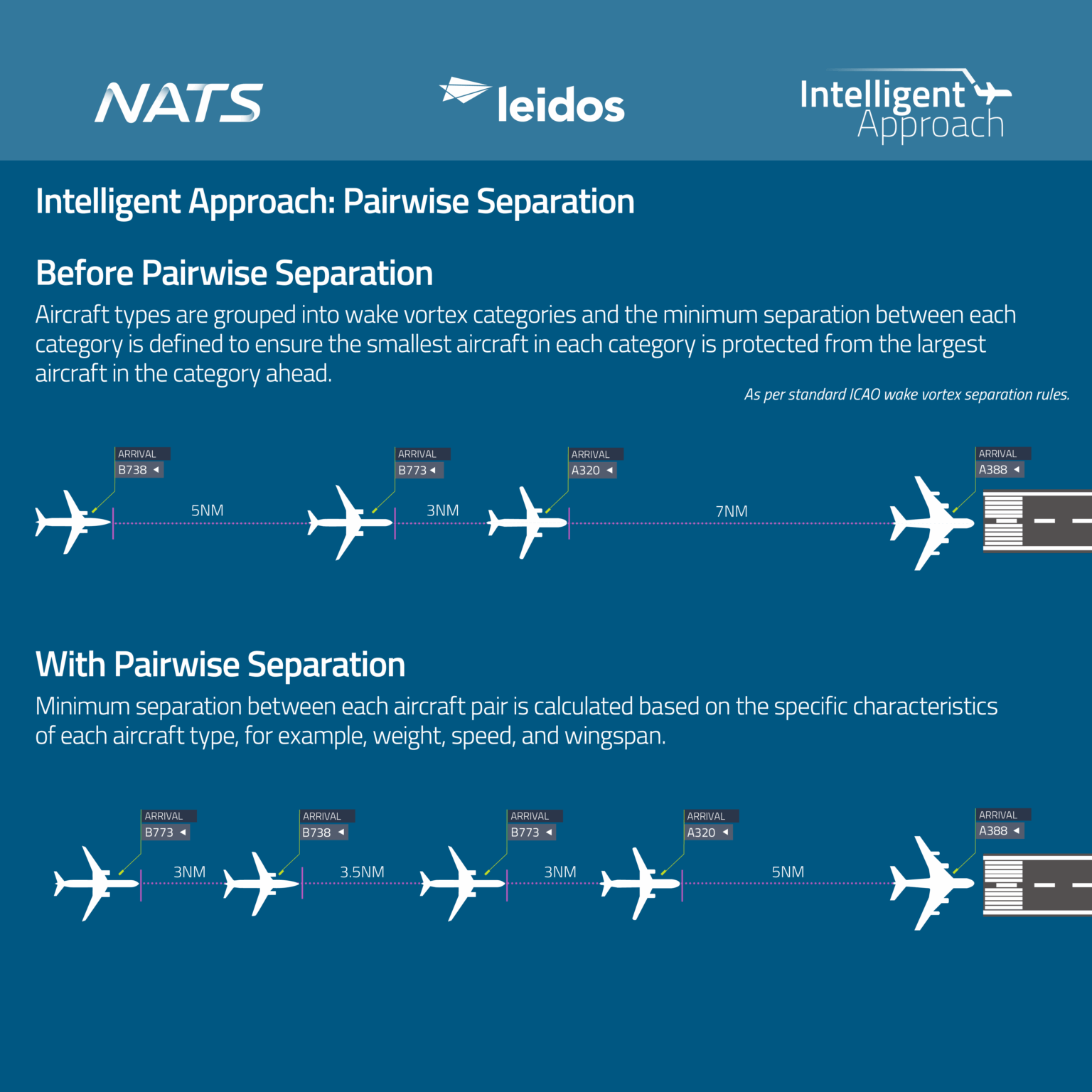Intelligent Approach delivers on-time boost and carbon cuts with world-first at London Heathrow Airport
NATS’ world-first Pairwise separation at Heathrow is improving punctuality, cutting delays, and reducing carbon emissions, delivering greater efficiency and resilience for airport operations.

A cut in carbon emissions, better punctuality, and greater operational resilience. These are among the benefits being delivered by the air traffic service provider, NATS, following its introduction of a world first aircraft separation standard at London Heathrow Airport.
NATS deployed Pairwise separation – a part of the Intelligent Approach arrivals spacing tool – in December 2024 as a new way of calculating the gap between arriving aircraft. Developed jointly by NATS and Leidos UK, Intelligent Approach was first introduced at Heathrow Airport in 2015, where its use of dynamically calculated time-based separation has cut headwind delays by more than 60% and saved over 45,000 tonnes of CO2 a year. Pairwise is now adding to these benefits.
Analysis of the first six months of Pairwise has revealed benefits when comparing the same period in 2024. The percentage of arrivals with no delay has improved by more than six percentage points, average arrival delay has fallen by almost 20% and overall CO2 emissions are down by 18,600 tonnes.
While the overall number of flights at Heathrow is capped, Pairwise has contributed to the average landing rate at peak times by over one movement per hour. Heathrow has become Europe’s most punctual major airport so far this year. This tactical capacity has added valuable resilience to operations, helping to minimise delays and the impact of disruption.
|
|
Jan-May 2024 |
Jan-May 2025 |
Benefit |
|
Average landing rate 6am-10am |
39.32 arrivals |
40.57 arrivals |
3.2% increase |
|
Arrivals with no delay |
17.84% |
24.04% |
6.2 percentage point improvement |
|
Average delay per arrival |
5.55 minutes |
4.46 minutes |
19.6% improvement |
|
Emissions: CO2 per flight (or arrival?) |
1,240kg |
1,000kg |
19.3% cut |
Pairwise is a new way of calculating the safe minimum separation between aircraft. Traditionally, the gap between arrivals has been based on six categories that consider an aircraft’s weight and the wake it creates as it flies. Pairwise uses the specific characteristics of each individual aircraft type, supporting air traffic controllers to safely reduce the separation between some aircraft pairs, thereby increasing the overall flow of traffic and reducing airborne holding.
Gary Harman, Head of Punctuality and ATM at Heathrow, said: “Making sure passengers arrive on time is fundamental to making every journey better. Working with NATS we can already see the incremental improvements that Pairwise is helping to deliver. It’s no secret that Heathrow is operating at capacity and innovations like this are a great way to improve punctuality and resilience while reducing our impacts.”
Graham Emmons, Managing Director, Civil at Leidos UK & Europe, said: “The successful operational deployment of Pairwise at London Heathrow is a real step forward. With Pairwise, we’re improving the use of existing runway capacity and delivering tangible operational and environmental benefits – contributing to smoother airport operations, reduced fuel burn for airlines, and more punctual journeys for passengers.”
Brendan Kelly, Head of Queue and Capacity Management Solutions at NATS, said: “Pairwise was another world first deployment for NATS and while and there are lots of factors that can influence operational performance, these interim benefits paint a very positive picture of the value it is delivering for Heathrow and our airline customers. Our job now is to continue evaluating the tool to understand where we can deliver even greater operational and environmental benefits over the busy summer period and beyond.”
Intelligent Approach has also been deployed at Toronto Pearson, Amsterdam Schiphol and Gatwick airports. In May 2025, NATS announced a contract with Saudi Air Navigation Services to introduce the tool at three Saudi airports. To discover the full capabilities of Intelligent Approach, visit: intelligentapproach.aero
Research on Pairwise separation was carried out by NATS as part of the SESAR Programme.


